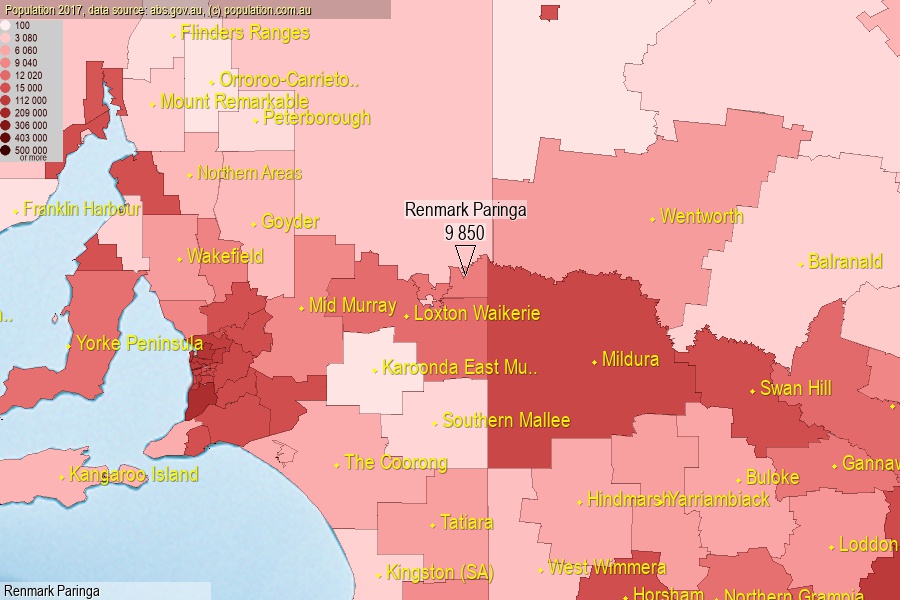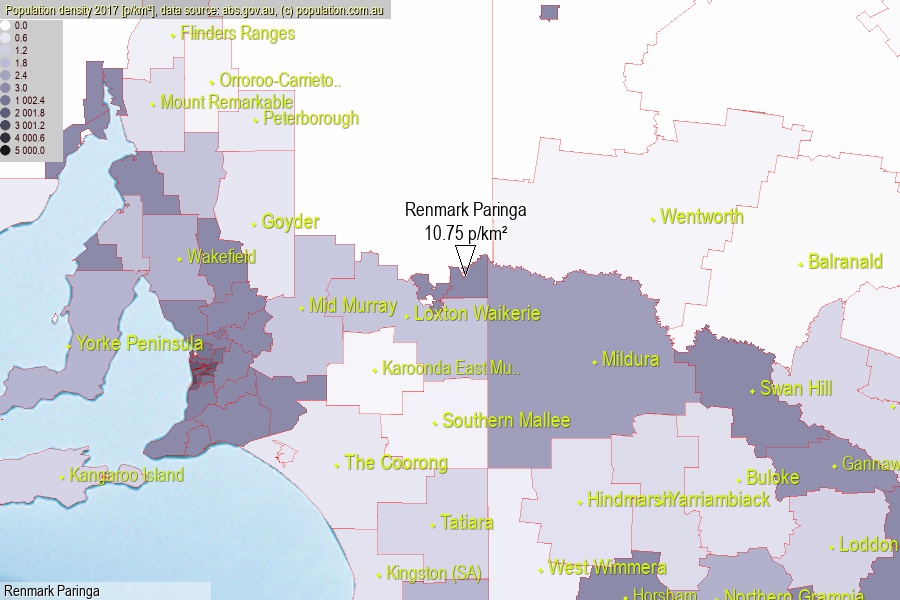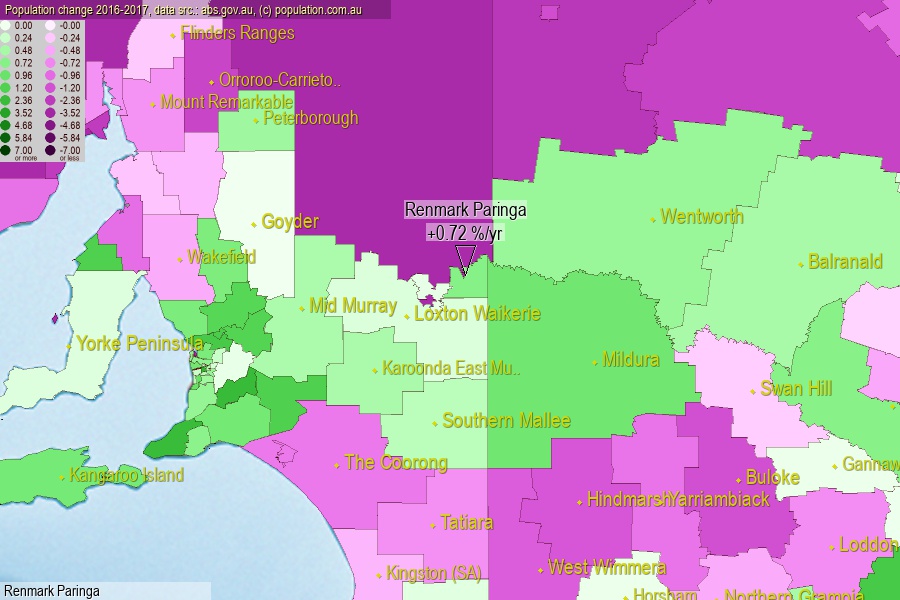 population.com.au
population.com.auLast official estimated population of Renmark Paringa District Council (as Local Government Area) was 9 850 people (on 2017-06-30)[2]. This was 0.04% of total Australian population and 0.568% of SA population. Area of Renmark Paringa is 915.90 km², in this year population density was 10.75 p/km² . If population growth rate would be same as in period 2016-2017 (+0.72%/yr), Renmark Paringa population in 2025 would be 10 428. [0]



Click to enlarge. Renmark Paringa is located in the center of the images.
Population [people], population density [p./km²] and population change [%/year] [2]
[1996-2001] +0.24 %/Y
[2001-2002] +0.40 %/Y
[2002-2003] -1.61 %/Y
[2003-2004] -0.40 %/Y
[2004-2005] +0.45 %/Y
[2005-2006] +0.11 %/Y
[2006-2007] -0.33 %/Y
[2007-2008] -0.33 %/Y
[2008-2009] -0.60 %/Y
[2009-2010] -0.50 %/Y
[2010-2011] -0.95 %/Y
[2011-2012] +0.94 %/Y
[2012-2013] +0.74 %/Y
[2013-2014] +0.71 %/Y
[2014-2015] +0.68 %/Y
[2015-2016] +0.60 %/Y
[2016-2017] +0.72 %/Y
[0] Calculated with linear interpolation from officially estimated population
[1] Read more about LGA and Australian Statistical Geography Standard (ASGS) on abs.gov.au
[2] Population data from Australian Bureau of Statistics (Population and density: 2017; change: 2016-2017)
[3] Digital Boundaries: Australian Statistical Geography Standard (ASGS) 2016.